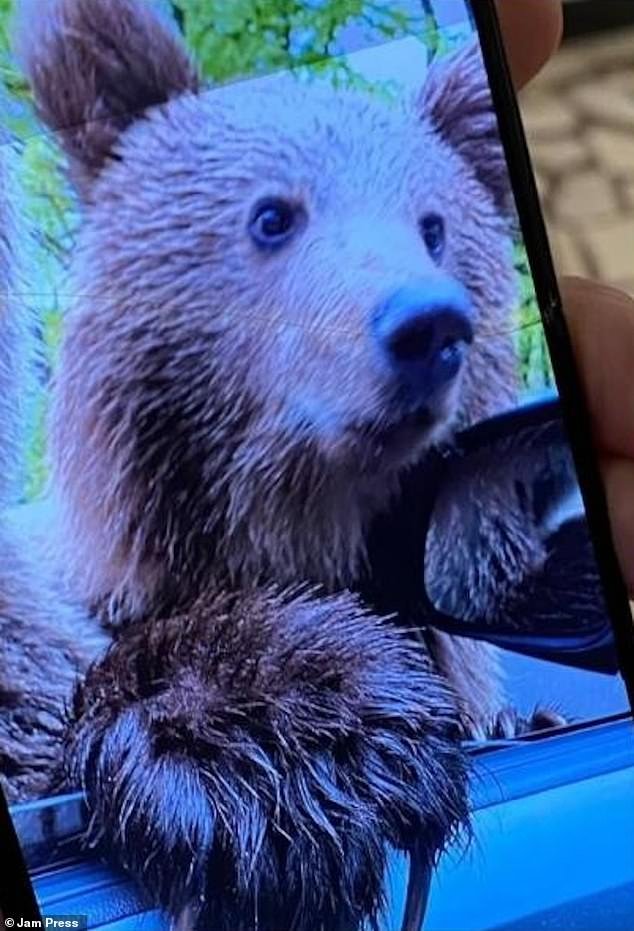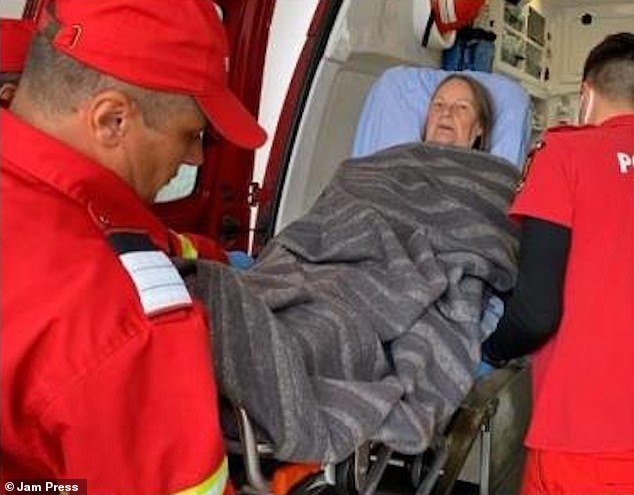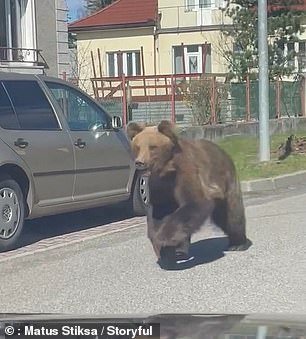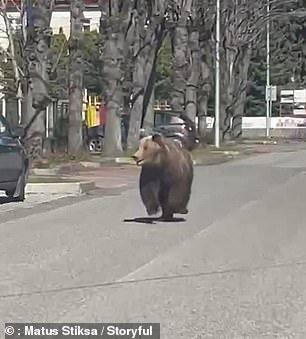British tourist, 72, is mauled by a bear after lowering car window to take a selfie with it in Romania
An elderly British tourist was mauled by a ferocious bear after opening her car window to take a selfie with it in Romania.
The 72-year-old Scottish woman was driving on the Transfăgărăşan mountain road in Argeş province on April 22 when she came across two bears.
As she stopped the car to take a photo with the impressive predators, one of the bears jumped onto its hind legs right outside her vehicle.
The tourist bravely rolled down her window to get a better look at the creature as she readied her phone for the photo.
But in a grisly turn of events, the bear lunged forward and mauled her right arm.
A Scottish tourist, 72, was driving along a mountain road in Romania when she came across two bears

After deciding she wanted to take a selfie with the bear, she rolled down her car window, but one of the predators had jumped up on its hind legs

The bear mauled her arm while she was still in the vehicle. She was taken to a nearby hospital and told local reporters that her arm was “sore.”
Her traveling companion quickly stepped on the accelerator as the pair fled the horror scene and made a desperate attempt to escape further attacks.
The woman was taken to a nearby hospital after the brutal attack in the Carpathians.
She told local reporters she was from Scotland and revealed her arm was “sore” after her run-in with the creature.
The traveler said: ‘We were in the car and we went to take a photo.
“And the bears came to the window.”
In her hospital bed, she added, “I just wanted to take a picture of him.”
Doctors have now confirmed that the woman’s injuries are not life-threatening.
Following the attack, police reportedly organized themselves into several teams to drive the bears away from the area.
They also advised residents and tourists to always maintain a safe distance when encountering wildlife.
It comes after a terrifying wave of bear attacks in Slovakia last month.
A Belarusian woman, 31, had been hiking in the Low Tatra Mountains with a male companion before they were attacked by a bear.
According to her male companion, he and the woman fled in different directions, into the surrounding dense forest and steep ravines.
Her body was discovered in March by the Slovak Mountain Rescue Service, while the bear was still nearby, which was scared off by gunfire from the rescue team.
Just days later, a brown bear unleashed its terror when it rampaged through the Slovak town of Liptovský Mikuláš and attacked two people, leaving them hospitalized.
A 49-year-old woman suffered an injury to her shoulder, while a 72-year-old man was treated for a cut to his head after the pair were targeted by the beast.
A 10-year-old girl and two more adults suffered scrapes and bruises, authorities said, while a couple pushing their child in a buggy were “lucky to escape unscathed.”


The brown bear that wreaked havoc on the streets of Liptovský Mikuláš, Slovakia, was shot dead on March 27
Officials subsequently declared a state of emergency and locals were urged not to leave their homes while the predator remained at large.
The brown bear was shot dead on March 27 after a ten-day drone hunt.
Bears are common in much of Eastern Europe in the areas surrounding the Carpathian Mountains, which stretch from Romania to Poland and run through Slovakia.
There have been a number of bear attacks across Eastern Europe in recent years, including a fatal attack in Slovakia in 2021.
The Slovak Environment Ministry said it will, together with Romania, propose at the next EU Council of Environment Ministers to relist bears as protected species, as their numbers mean they are no longer endangered and could become selective cleared.
